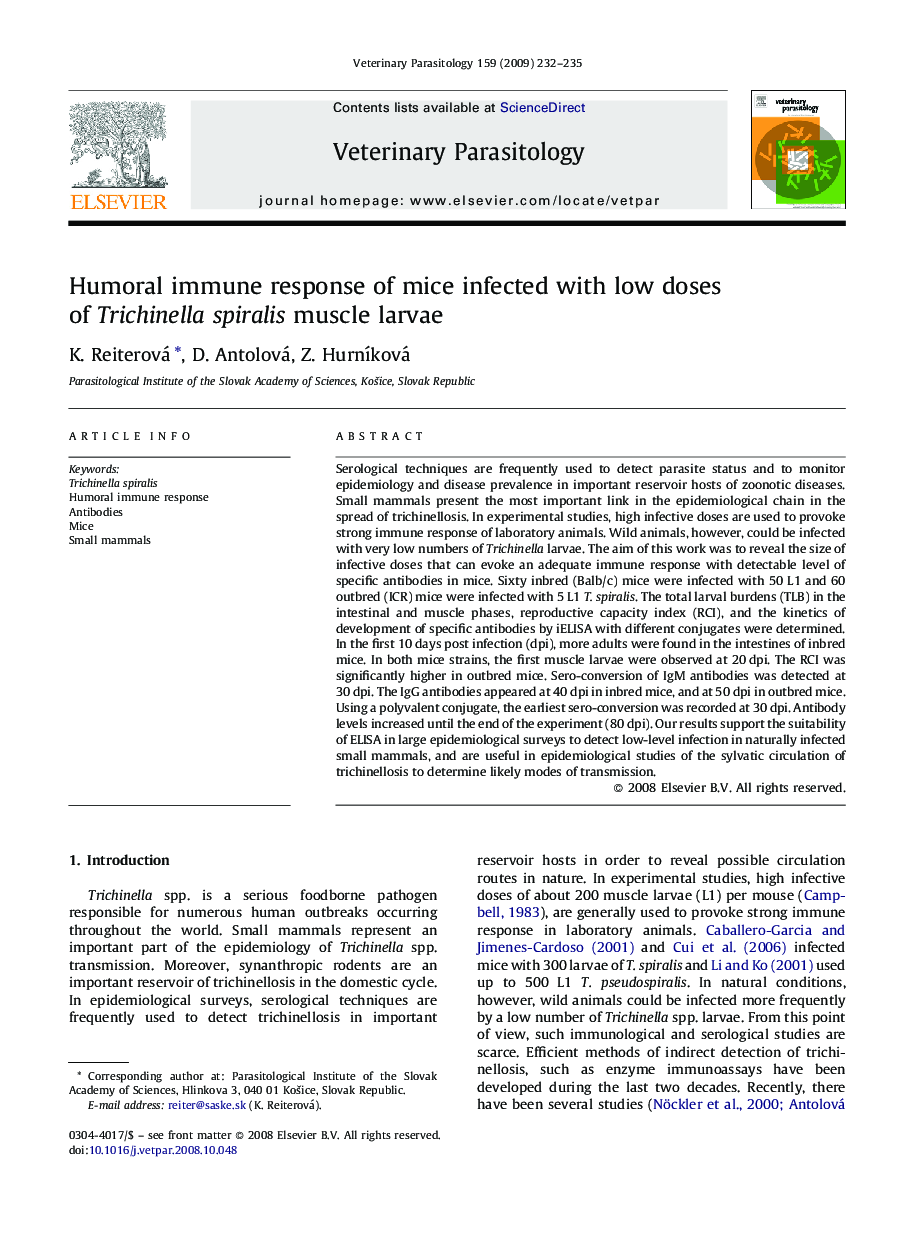| Article ID | Journal | Published Year | Pages | File Type |
|---|---|---|---|---|
| 5806329 | Veterinary Parasitology | 2009 | 4 Pages |
Serological techniques are frequently used to detect parasite status and to monitor epidemiology and disease prevalence in important reservoir hosts of zoonotic diseases. Small mammals present the most important link in the epidemiological chain in the spread of trichinellosis. In experimental studies, high infective doses are used to provoke strong immune response of laboratory animals. Wild animals, however, could be infected with very low numbers of Trichinella larvae. The aim of this work was to reveal the size of infective doses that can evoke an adequate immune response with detectable level of specific antibodies in mice. Sixty inbred (Balb/c) mice were infected with 50 L1 and 60 outbred (ICR) mice were infected with 5 L1 T. spiralis. The total larval burdens (TLB) in the intestinal and muscle phases, reproductive capacity index (RCI), and the kinetics of development of specific antibodies by iELISA with different conjugates were determined. In the first 10 days post infection (dpi), more adults were found in the intestines of inbred mice. In both mice strains, the first muscle larvae were observed at 20Â dpi. The RCI was significantly higher in outbred mice. Sero-conversion of IgM antibodies was detected at 30Â dpi. The IgG antibodies appeared at 40Â dpi in inbred mice, and at 50Â dpi in outbred mice. Using a polyvalent conjugate, the earliest sero-conversion was recorded at 30Â dpi. Antibody levels increased until the end of the experiment (80Â dpi). Our results support the suitability of ELISA in large epidemiological surveys to detect low-level infection in naturally infected small mammals, and are useful in epidemiological studies of the sylvatic circulation of trichinellosis to determine likely modes of transmission.
